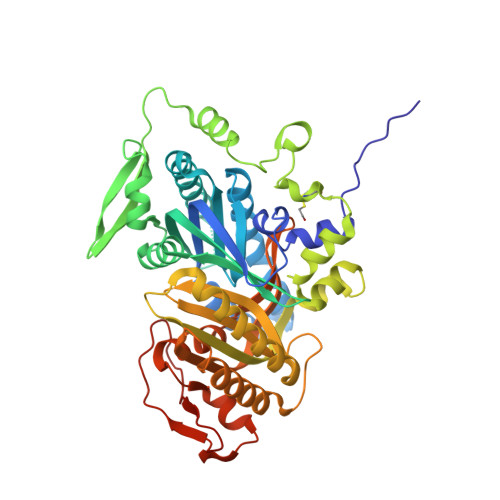Discovery of LRE1 as a specific and allosteric inhibitor of soluble adenylyl cyclase.
Ramos-Espiritu, L., Kleinboelting, S., Navarrete, F.A., Alvau, A., Visconti, P.E., Valsecchi, F., Starkov, A., Manfredi, G., Buck, H., Adura, C., Zippin, J.H., van den Heuvel, J., Glickman, J.F., Steegborn, C., Levin, L.R., Buck, J.(2016) Nat Chem Biol 12: 838-844
- PubMed: 27547922
- DOI: https://doi.org/10.1038/nchembio.2151
- Primary Citation of Related Structures:
5IV3, 5IV4 - PubMed Abstract:
The prototypical second messenger cAMP regulates a wide variety of physiological processes. It can simultaneously mediate diverse functions by acting locally in independently regulated microdomains. In mammalian cells, two types of adenylyl cyclase generate cAMP: G-protein-regulated transmembrane adenylyl cyclases and bicarbonate-, calcium- and ATP-regulated soluble adenylyl cyclase (sAC). Because each type of cyclase regulates distinct microdomains, methods to distinguish between them are needed to understand cAMP signaling. We developed a mass-spectrometry-based adenylyl cyclase assay, which we used to identify a new sAC-specific inhibitor, LRE1. LRE1 bound to the bicarbonate activator binding site and inhibited sAC via a unique allosteric mechanism. LRE1 prevented sAC-dependent processes in cellular and physiological systems, and it will facilitate exploration of the therapeutic potential of sAC inhibition.
Organizational Affiliation:
Department of Pharmacology, Weill Cornell Medical College, New York, New York, USA.























